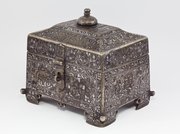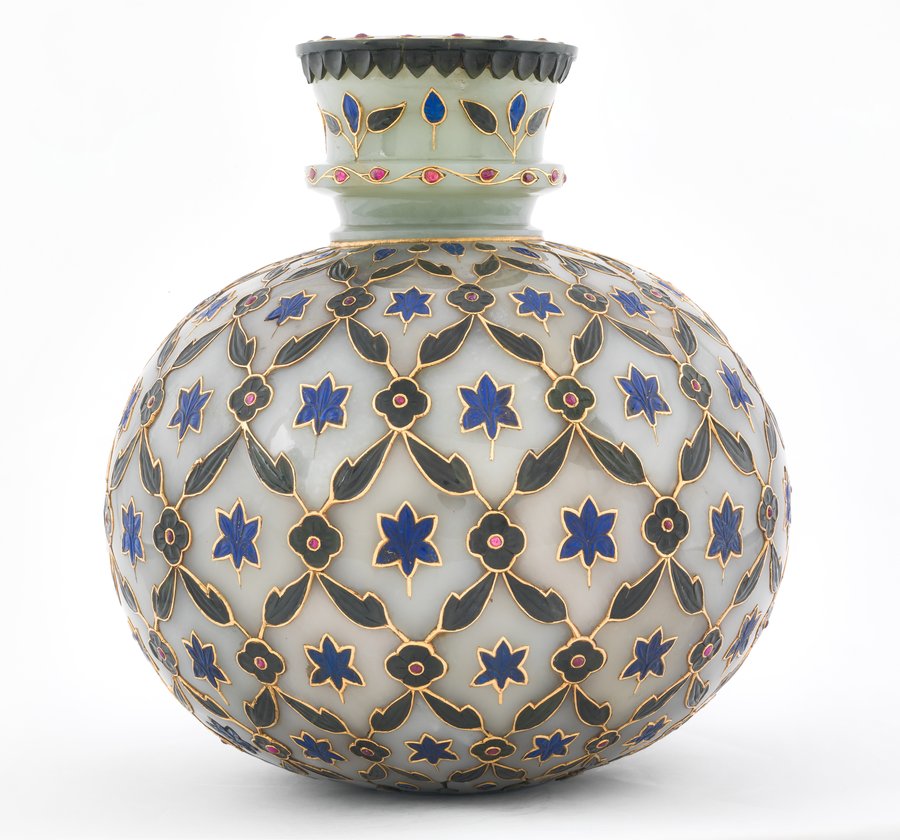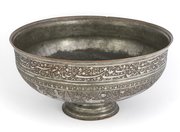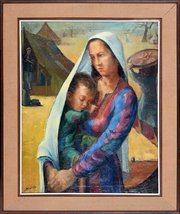
Huqqa Base
Museum of Islamic Art
- Title:
- Huqqa Base
- Production place:
- India
- Date:
- 1700 - 1799
- Period:
- Mughal
- Title:
- Huqqa Base
- Production place:
- India
- Date:
- 1700 - 1799
- Period:
- Mughal
- Material:
- Jade, Lapis lazuli, Ruby, Gold
- Technique:
- Carving, Inlaying, Cabochoning, Engraving
- Dimensions:
- 18.4 × 17.2
This spherical huqqa base is carved from white nephrite, one of the two constituents of jade, the other being the greener jadeite. It has been inlaid with a trellis of interlocking foliate cartouches formed by pieces of dark green jade in the shape of leaves, enclosing six-petalled lapiz lazuli flowers. Four-petalled green jade flowers with cabochon ruby centres embellish the interstices of the trellis. The gemstones have been finely carved with the veins of the leaves and petals.
The tobacco plant arrived into the Indian subcontinent sometime during the late 10th century AH/late 16th century CE, and although both Mughal Emperors Akbar (r 963-1013 AH/1556-1605 CE) and Jahangir (r. 1014 1037 AH/1605-27 CE) tried to ban smoking at court, the act quickly gained popularity amongst the courtly elite. Its popularity gave way to a proliferation of smoking devices, of which the spherical shaped huqqa - derived from the traditional Indian water carrier (lota) - took form. Accompanied with a chillam, pipe and mouthpiece (monal), the huqqa base would have been filled with water to cool and purify the smoke. This particular huqqa once belonged to the Qing Dynasty Emperor Qianlong (r. 1148-1210 AH/1736-1795 CE), as his seal is inscribed on its base.



